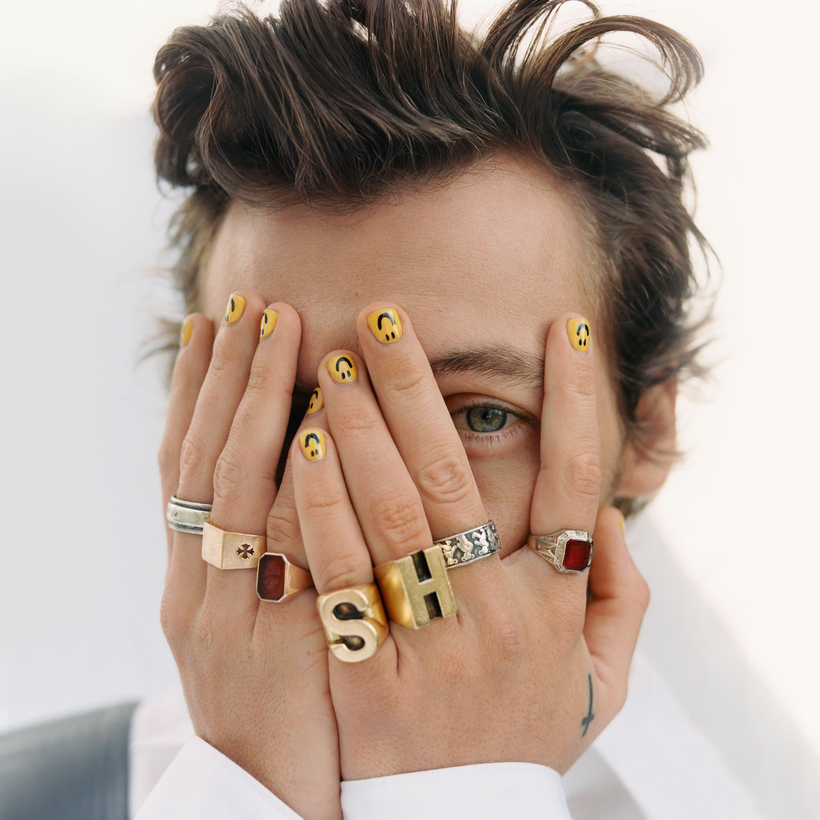Where do we invent new kinds of men? And how? Over the past ten years, the current feminist renaissance – the femaissance, if you will – has served us up dozens of new kinds of women. Body-positive, twerking Lizzo in her purple leotard; the gleeful hustler-stoner Jewish girls in Broad City; Michaela Coel’s dazzling, flawed turn in I May Destroy You; the mustache-wearing King Princess. Fleabag, Greta Thunberg, Villanelle, Cardi B, Beyoncé, Michelle Obama, Malala; every week, it seems, there’s a new kind of woman being minted. I can’t lie – as the mother of teenage daughters, it’s awesome. When I was their age, my female role models came down to a) Margaret Thatcher, or b) Courtney Love. Obviously, that’s a potent mix – but not one with, shall we say, much nuance.
But men, on the other hand? Who do 21st-century teenage boys have to look up to? Alas, there’s not so much invention here. Pop culture still tends to offer us superheroes, gangsters, detectives, “good, normal blokes”, or neurotic man-boys. David Tennant’s turn in Doctor Who – a hot, witty, genius pacifist – was 15 long years ago. Lil Nas X used Old Town Road to invent “glamorous gay cowboy”; and, in Game of Thrones, Peter Dinklage’s dark, sarcastic Tyrion was, essentially, a dwarf Martin Amis stuck in a Dungeons & Dragons epic.
But other than that? The range of heroes young men have to be inspired by is bizarrely limited. Perhaps this explains the rise of men’s rights activists and incels. What insecure man wouldn’t be angered by, and jealous of, women? Women these days get to do everything – “woman stuff” like having emotions, nice dresses and babies; and “man stuff”, like having jobs, talking about sex and wearing trousers. Men feel a pressure to accrue and display power, money, physical strength, sexual attractiveness and “toughness”. If you fail to have these things, the fear is that neither men nor women will respect you.
This is why the rise and rise of Harry Styles, right – former teen heartthrob of One Direction turned singer-songwriter, model and icon – is so heartening. Styles is, yes, rich – apparently worth $82 million – and sexually attractive. As I am 45 and he is 27, it does not behoove me to dwell on his attractiveness: I’ve reached an age where you stop fancying hot young pop stars and start exclaiming, “Oh, I bet his mother is so proud of him,” instead.

But it’s what Styles has decided to do with all his power and fame that’s so intriguing. Last month, he appeared on the cover of Vogue, wearing a dress. This isn’t the first time Styles has worn “things that only women are supposed to wear” – he’s regularly popped up wearing pearl necklaces and see-through blouses – but it is certainly the most controversial. Candace Owens, an American conservative author and activist, tweeted, “There is no society that can survive without strong men… In the west, the steady feminization of our men at the same time that Marxism is being taught to our children is not a coincidence. It is an outright attack. Bring back manly men.”
It certainly kicked off a heated debate about what “being a man” means now. This only intensified with the release of the video for his single “Treat People with Kindness.” It essentially casts him as Ginger Rogers, and Fleabag’s Phoebe Waller-Bridge as Fred Astaire: it’s Waller-Bridge wearing the trousers, smoking a cigar and bending the similarly trousered Styles over her arm for a kiss at the end.
I’ve reached an age where you stop fancying hot young pop stars and start exclaiming, “Oh, I bet his mother is so proud of him,” instead.
And Styles clearly believes in the “admiring female power” signals he’s giving off – his love life has not been an endless string of blonde models. Instead, his partners are invariably smart, older career women – his current girlfriend, the director Olivia Wilde, is 36. Not since George Clooney married a leading human rights lawyer has middle-aged, working womankind felt so… valued.
What’s fascinating about Styles’ gleeful embracing of “feminine” things is that, contrary to what many conservatives believe, it has made him more powerful and desirable. After all, you have to have an astonishing amount of balls to give up every traditional signifier of masculine power.
Harry Styles’ continuing popularity rests on him being an outlier: one of the first straight men to realize that if women have found power and freedom by taking masculine things, then men can be equally empowered by adopting feminine things. When Alexander the Great wept because he had no new worlds to conquer, if only he’d realized his next big challenge could have been “wearing a lovely floral suit and talking to women”. Like this new kind of man, Harry Styles.

